
Northville is a city in Oakland and Wayne counties in the U.S. state of Michigan. The population was 6,119 at the 2020 census.

Edsel Bryant Ford was an American business executive and philanthropist who was the only child of pioneering industrialist Henry Ford and his wife, Clara Jane Bryant Ford. He was the president of Ford Motor Company from 1919 until his death in 1943.

Albert Kahn was an American industrial architect. He was accredited the architect of Detroit and designed industrial plant complexes such as the Ford River Rouge automobile complex. He designed the construction of Detroit skyscrapers and office buildings as well as mansions in the city suburbs. He led an organization of hundreds of architect associates and in 1937, designed 19% of all architect-designed industrial factories in the United States. Under a unique contract in 1929, Kahn established a design and training office in Moscow, sending twenty-five staff there to train Soviet architects and engineers, and to design hundreds of industrial buildings under their first five-year plan. They trained more than 4,000 architects and engineers using Kahn's concepts. In 1943, the Franklin Institute posthumously awarded Kahn the Frank P. Brown Medal.

The Highland Park Ford Plant is a former Ford Motor Company factory located at 91 Manchester Street in Highland Park, Michigan. It was the second American production facility for the Model T automobile and the first factory in history to assemble cars on a moving assembly line. It became a National Historic Landmark in 1978.
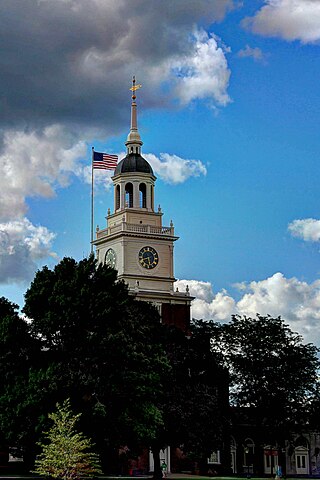
The Henry Ford is a history museum complex in the Detroit suburb of Dearborn, Michigan, United States. The museum collection contains the presidential limousine of John F. Kennedy, Abraham Lincoln's chair from Ford's Theatre, Thomas Edison's laboratory, the Wright Brothers' bicycle shop, the Rosa Parks bus, and many other historical exhibits. It is the largest indoor–outdoor museum complex in the United States and is visited by over 1.7 million people each year. It was listed on the National Register of Historic Places in 1969 as Greenfield Village and Henry Ford Museum and designated a National Historic Landmark in 1981 as "Edison Institute".

The Ford Piquette Avenue Plant is a former factory located within the Milwaukee Junction area of Detroit, Michigan, in the United States. Built in 1904, it was the second center of automobile production for the Ford Motor Company, after the Ford Mack Avenue Plant. At the Piquette Avenue Plant, the company created and first produced the Ford Model T, the car credited with initiating the mass use of automobiles in the United States. Prior to the Model T, several other car models were assembled at the factory. Early experiments using a moving assembly line to make cars were also conducted there. It was also the first factory where more than 100 cars were assembled in one day. While it was headquartered at the Piquette Avenue Plant, Ford Motor Company became the biggest U.S.-based automaker, and it would remain so until the mid-1920s. The factory was used by the company until 1910, when its car production activity was relocated to the new, bigger Highland Park Ford Plant.
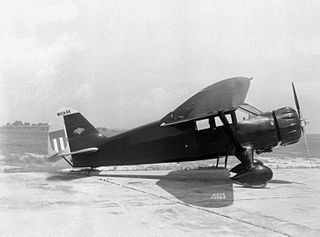
The Stinson Aircraft Company was an aircraft manufacturing company in the United States between the 1920s and the 1950s.
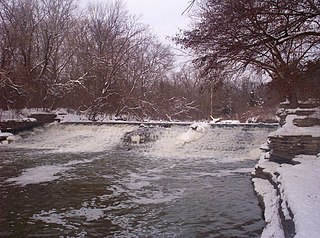
The River Rouge is a 127-mile river in the Metro Detroit area of southeastern Michigan. It flows into the Detroit River at Zug Island, which is the boundary between the cities of River Rouge and Detroit.

The Ford River Rouge complex is a Ford Motor Company automobile factory complex located in Dearborn, Michigan, along the River Rouge, upstream from its confluence with the Detroit River at Zug Island. Construction began in 1917, and when it was completed in 1928, it was the largest integrated factory in the world, surpassing Buick City, built in 1904.
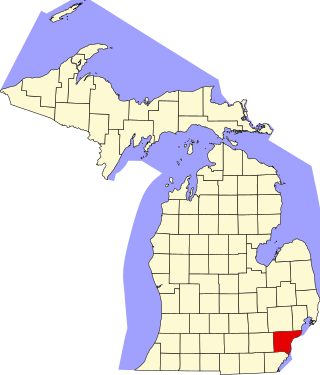
This is a list of the National Register of Historic Places listings in Wayne County, Michigan.

The Piquette Avenue Industrial Historic District is a historic district located along Piquette Street in Detroit, Michigan, from Woodward Avenue on the west to Hastings Street on the east. The district extends approximately one block south of Piquette to Harper, and one block north to the Grand Trunk Western Railroad Line. It was listed on the National Register of Historic Places in 2004.

This is a list of the National Register of Historic Places listings in Detroit, Michigan.

The Lincoln Motor Company Plant was an automotive plant at 6200 West Warren Avenue in Detroit, Michigan, later known as the Detroit Edison Warren Service Center. The complex was designated a National Historic Landmark in 1978, due to its historic association with World War I Liberty engines and the Lincoln Motor Company. However, the main structures were demolished in 2003 and NHL designation was withdrawn in 2005.
Milwaukee Junction is an area in Detroit, Michigan, east of New Center. Located near the railroad junction of the Grand Trunk Western Railroad's predecessors Detroit, Grand Haven and Milwaukee Railway and the Chicago, Detroit and Canada Grand Trunk Junction, the area encompasses the streets of East Grand Boulevard to the north, St. Aubin St./Hamtramck Drive to the east, John R Street to the west, and the border following I-94 to the south. Due to the presence of numerous car companies within it at the turn of the 20th century, Milwaukee Junction is considered the "cradle of the Detroit auto industry".

The Old Mill Museum, also known as the Alfred Wilkerson Grist Mill, is a historic structure located along the River Raisin at 242 Toledo Street in Dundee, Michigan. It was designated as a Michigan Historic Site on August 3, 1979. It was later listed as a contributing property within the Dundee Historic District, which was added to the National Register of Historic Places on August 20, 1990.
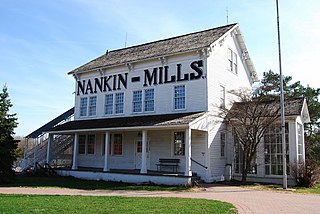
The Nankin Mills Nature Center is a historic and nature interpretive center located at 33175 Ann Arbor Trail in Westland, Michigan. It was originally built as a grist mill, and was one of Henry Ford's "village industries." The mill was designated a Michigan State Historic Site in 1967.

The Schuyler Mill, also known as the Ford Soybean Plant Complex, is an old mill site that Henry Ford turned into one of his small village industry factories. It is located at 555-600 Michigan Avenue in Saline, Michigan, and was listed on the National Register of Historic Places in 1996.

Henry Ford's Village Industries were small factories located in rural areas of Michigan. Ford developed his Village Industries in part to provide farm workers a stable source of income during the winter months.

This is a list of the National Register of Historic Places listings in Downtown and Midtown Detroit, Michigan. It is intended to be a complete list of the properties and districts on the National Register of Historic Places in Downtown and Midtown neighborhoods in Detroit, Michigan, United States. Latitude and longitude coordinates are provided for many National Register properties and districts; these locations may be seen together in online maps.

The Ford Motor Company Brooklyn Plant is a former industrial plant located at 221 Mill Street in Brooklyn, Michigan. It was listed on the National Register of Historic Places in 2017.
























